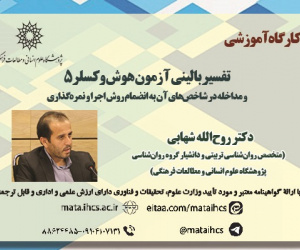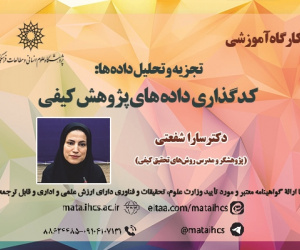بررسی اصالت دو اثر «ملفوظات»، انیس الارواح و خیرالمجالس (مقاله علمی وزارت علوم)
درجه علمی: نشریه علمی (وزارت علوم)
آرشیو
چکیده
«ملفوظات» به ضبط و نگارش سخنان مشایخ در مجالس صوفیه هند گفته می شود. بعد از نگارش فوائد الفؤاد امیرحسن سجزی در اوایل سده 8ق که کامل ترین نمونه این گونه ادبی است، برخی از آثار با نام ملفوظات ظهور کردند که مربوط به شیوخ متقدم چشتیه و دست کم یک قرن پیش بودند. در اصالت و انتساب این آثار به نویسنده شان همواره بحث هایی وجود داشته است. این مقاله به مقایسه دو اثر «ملفوظات» از طریقه چشتیه می پردازد؛ خیرالمجالس، ملفوظات شیخ نصیرالدین محمود چراغ دهلی، از نظر اصالت مورد وثوق است و دیگری انیس الارواح، ملفوظات شیخ عثمان هارونی که یک قرن بعد از زمان نگارش، پیدا شدند. این مقاله با بازنگری دقیق تر این دو اثر و بررسی ویژگی های ساختاری و محتوایی، دلایلی به دست می دهد که منتسب و غیراصیل بودن انیس الارواح را در مقایسه با متن دیگر آشکار می سازد. مهم ترین این دلایل عبارت است از: فقدان حضور مؤلف، وجود ابهام تاریخی در اثر، انتساب نگارش متن به خلیفه اصلی شیخ، وجود برخی ویژگی های متون مکتوب و بسامد پایین خصلت شفاهی در متن منتسب و جعلی.Reviewing the authenticity of two works "Malfuzat", Anis al_Arwah and kheir al_Majalis
Malfuzat is said to the texts that are the result of writing and collecting the words of sheikhs in sufi meetings of India. After the writing of “Fawaid al-Fuad” Amir Hassan Sijzi, which is the most impressive example of this literary genre, in the early 8 th century, some works called Malfuzat appeared, which were related to the early sheikhs of Chishti and at least a century ago. There have always been debates about the authenticity and attribution of these works to their author. This article compares two works of “Malfuzat” by Chishti Order; Khair al-Majalis, the compilations of sheikh Nasiruddin Mahmood chirag dehlavi, is reliable in terms of authenticity, and the other is anis Al-Arwah, the compilations of sheikh Usman Harooni, which became popular a century after it was written. this article, by reviewing these two works more closely and examining the structural and content characteristics, gives reasons that reveal the imputation and inauthenticity of anis al-arwah compared to other text. The most important of these reasons are the absence of the presence of the author, the existence of historical ambiguity in the work, the attribution of the writing of the text to the main caliph sheikh, the existence of some characteristics of written texts, and the low frequency of verbal character in attributed and fake text.








